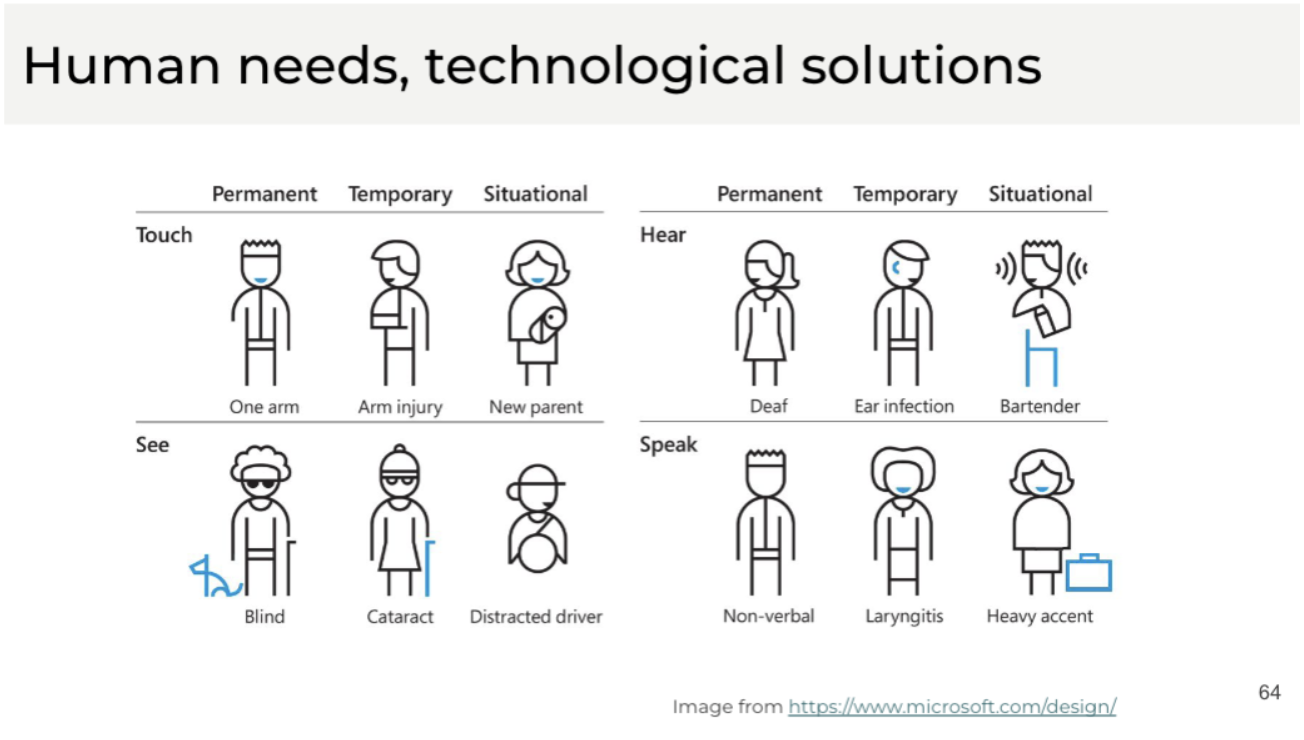Background
This session covers the background in accessibility and its importance in the field of computational biology.
What is Accessibility?
“Accessibility is the design of products, devices, services, vehicles, or environments so as to be usable by people with disabilities.”
Henry et al. 2014
Population of Disability
- 26% of the US population reported to have more than one disability.
- Among them 13.7% reported having mobility disability and 10.8% having cognitive disability
- Worldwide, 29% has visual disability or colorblindness.
How the Computer Sees Us
The computer system largely depends on a few input and output channels of human, including vision, touch, and sound, making barriers for people with disabilities.

Multimodal User Interactions
Common approach to address accessibility issues are supporting multimodal user interactinos, offering multiple input and output channels of human to users.

Typical Approach
The most common approach would be providing a more robust representation, such as text, for a less robust representation, such as images.
What Are Accessibility Technologies?

Accessibility Standards
- Web Content Accessibility Guidelines (WCAG)
- WCAG 2.2 (released in Oct. 2023)

The POUR Principles
The WCAG guidelines are structured based on four important categories.
- Perceivable
- Operable
- Understandable
- Robust
Why Should We Care?
- Our shared goal as computational biologists is to make our data and tools widely usable and accessible
- There is a notable discrepency between the US population and US genomic workforce of people with disabilities: 26% vs. 3%.
Accessibility is Good for Everyone
We all encounter situations in our lives where we become disabled.

Accessibility is Good for Computational Biology
There are several examples where accessibility help our research more impactful.
- Accessibility increases AI usability
- AI agents and LLMs can better understand/interact with your websites, tools, documentations if they follow accessibility guidelines
- Accessibility helps making your research reproducible
- “[R]eproducibility [of Jupyter Notebooks for biomedicine] could likely be improved considerably if the code—and dependencies in particular—were better documented.” (Samuel and Mietchen, 2024)
How is the Accessibility State in Computational Biology?
Our evaluation results showed that the majority of data portals (74.8% of 3,112) have severe accessibility issues (inscidar.org/).

What Can We Do To Make It Better?
We will cover four topics in our tutorial to make biological data resources and visualizations more accessible.
- Writing alt-text for biological data visualization
- Keyboard accessibility of biological resources
- Designing accessible biological visualization
- Making computational notebooks accessible